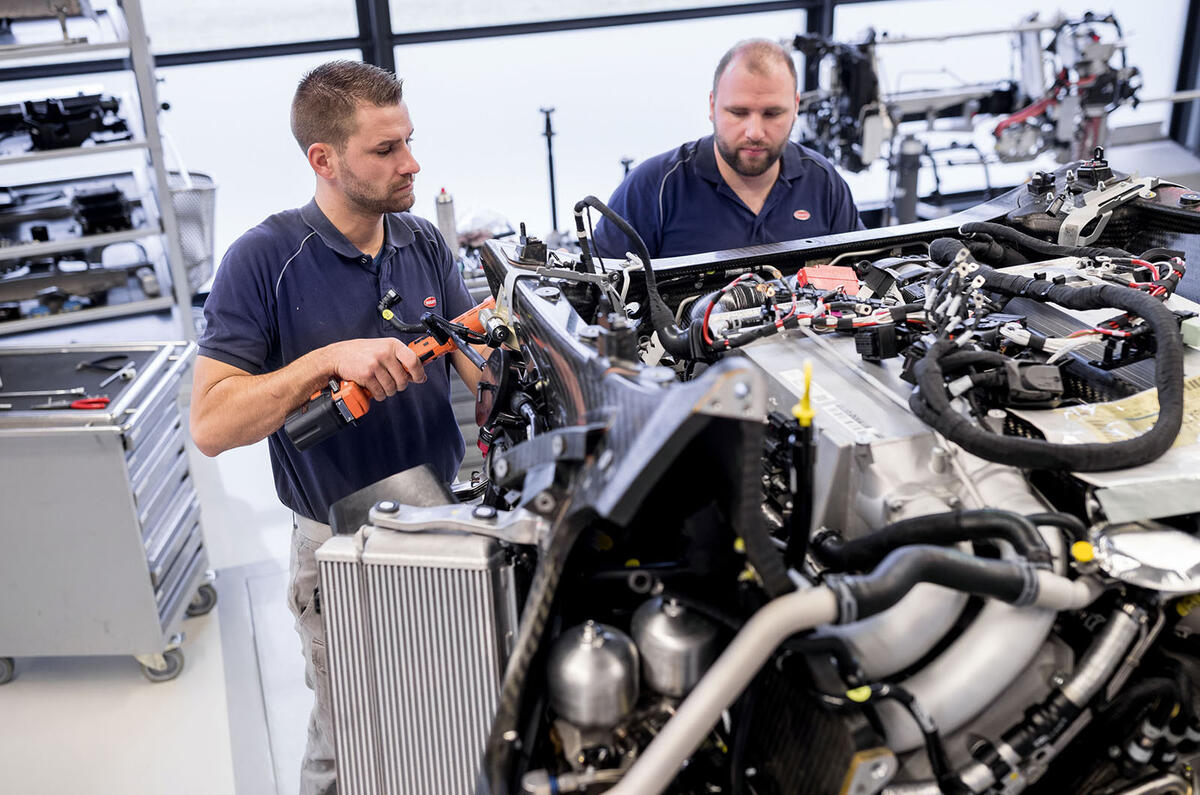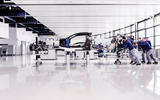Action-packed photographs of high-performance Italian cars used to line the walls of a small pizzeria in southern France.
Hungry tourists ate while ogling the Lamborghini Countach, the Ferrari F50 and the Bugatti Veyron. Except, of course, the latter isn’t Italian. Founder Ettore Bugatti was born in Milan, but every car he designed came to life in an Alsatian town named Molsheim. This tradition continues today with the Chiron, the latest torchbearer of the brand’s heritage.
Bugatti calls its glass-walled factory ‘the Atelier’. The production process relies exclusively on human hands, not algorithms and software; there is not a single robot present inside the facility. It helps that the company doesn’t manufacture its own parts. It sources everything from European suppliers.

The carbonfibre monocoque comes from Dallara, AP Racing supplies the brake calipers and Sparco manufactures the seats. Highly trained mechanics spend about a week assembling the quad-turbocharged, 16-cylinder engine in a special Volkswagen Group factory. Bugatti orders the parts required to make a Chiron about three months before production begins.
The Chiron travels through 12 stations in the Atelier. The first step of the process involves bolting the engine and the gearbox into a single unit and assembling the front sub-frame. Workers then marry the monocoque and the rear portion of the car using 14 titanium screws. The chassis is ready after about a week’s worth of labour. It moves to the filling station where it receives oil, coolant, brake fluid and its first tank of petrol.
It’s then placed on a dynamometer, bolted to the ground and driven at up to 124mph. Production boss Christophe Piochon told Autocar that the company had to order a new dynamometer able to cope with the Chiron’s monstrous horsepower and torque outputs because the unit used to test the Veyron wasn’t up to the task. The firm channels the excess electricity produced while testing each car directly into Molsheim’s power grid. Charge your phone in a local brasserie and the power it draws could come from a Bugatti’s four wheels.































Join the debate
Add your comment
Does the average VW customer still subsidize...
this richman's toy, as was the case with the Veyron? Roughly thar car costed more than twice the price it was sold for, which comes down to every other customer of the VW conglomerate picking up the tab for people who can basically afford to buy such a car.
Would be nice to......
would be a fascinating tour of the Factory just to see the meticulous attention to detail.